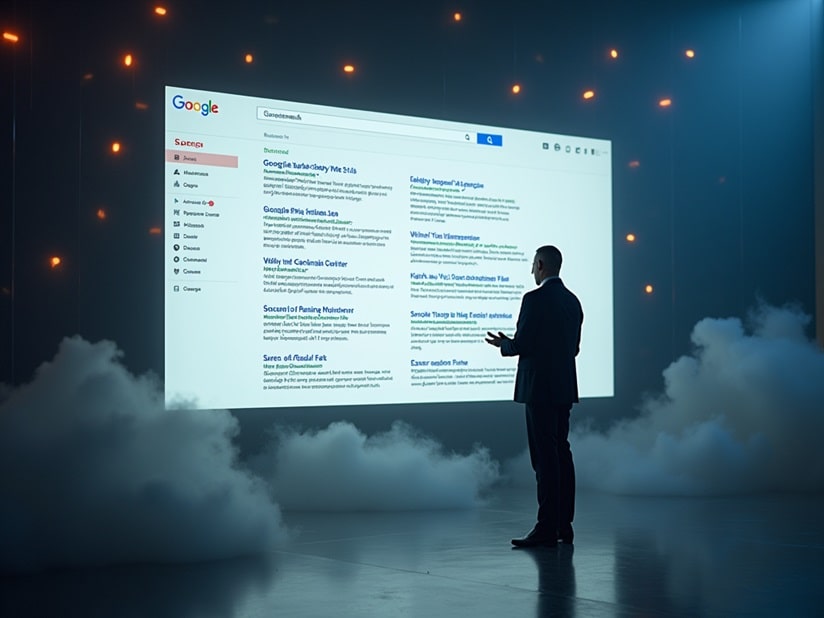The markets took another nosedive this morning as I sat down to write this post, my coffee getting cold beside me while I watched the numbers tumble. It’s becoming an all-too-familiar scene lately. If you’ve been following the financial news or even just noticed the anxiety creeping into conversations about money and investments, you’re not alone. The economic landscape of 2025 is starting to feel like standing on shifting sand, with recession fears mounting and uncertainty becoming the only certainty. But what’s really going on beneath the headlines, and how concerned should we actually be?
The Growing Chorus of Recession Predictions
Remember back in 2023 when everyone was buzzing about a “soft landing”? Those optimistic forecasts now seem like distant memories. Recently, the drumbeat of recession warnings has grown significantly louder and more convincing. Peter Berezin, a veteran strategist at BCA Research, made headlines when he proclaimed a startling 75% chance of recession within the next three months. “Conventional estimates underestimate the likely consequences of the trade conflict and DOGE cuts on economic activity,” Berezin noted, suggesting growth will decelerate more sharply than many anticipate.
And he’s not alone in that assessment. The latest Chief Economists Outlook from the World Economic Forum reveals that 56% of leading economists expect weaker global economic conditions in 2025, with only 17% foreseeing improvement. These aren’t just abstract numbers they reflect a genuine concern about fundamental economic weaknesses that could trigger a significant downturn.
The warnings are showing up in hard data too. The Atlanta Federal Reserve’s GDP nowcast model has recently projected negative growth for Q1 2025, suggesting the economy might already be contracting. Meanwhile, prediction markets like Kalshi have sharply increased recession probability estimates to around 40% for 2025 still shy of a certainty but definitely not reassuring.
I remember similar warnings before previous downturns, and there’s something different about the tone this time a convergence of expert opinions that’s hard to ignore. When I spoke to my financial advisor last week, even his typically unflappable demeanor had given way to careful consideration of defensive positioning. “It’s not about if anymore,” he told me, “it’s about how severe and how long.”
The Perfect Storm: Multiple Risk Factors Converging
What makes the current situation particularly concerning isn’t any single threat but rather the convergence of multiple risk factors that could amplify each other. It’s like watching storm systems collide individually manageable but potentially devastating together.
Tariffs and Trade Tensions
Perhaps the most immediate concern revolves around trade policy. The implementation of significant new tariffs has sent ripples through global markets and supply chains. These tariffs function essentially as taxes, increasing costs for both businesses and consumers. Market reactions have been swift, with concerns that these policies could tip already-weakening economies into outright contraction.
The Conference Board’s Consumer Confidence Index has fallen for three consecutive months, with a notable rise in discussions about trade and tariffs reaching levels not seen since 2019. Manufacturing is already showing strain, with the Dallas Fed survey for February revealing a significant decline in production and new orders.
But what makes tariffs particularly problematic is their potential to trigger retaliatory measures from trading partners. The International Air Transport Association (IATA) has warned that targeted countries are likely to retaliate, limiting U.S. exports and dampening international trade: “An outright trade war would be capable of plunging the global economy into recession”.
I’ve already noticed this impact in my own business. Last month, a supplier I’ve worked with for years warned me that prices would increase by 18% due to new tariff-related costs. When I asked about alternatives, he just shrugged. “Everyone’s in the same boat,” he said. “It’s going to hit consumers eventually.”
The Spectre of Stagflation
Perhaps more concerning than recession alone is the potential return of stagflation that economically poisonous combination of high inflation and low or negative growth that hasn’t seriously plagued the U.S. economy since the 1970s.
CNBC recently reported that we’re “clearly trending towards stagflation,” characterized by rising inflation and diminishing economic growth driven primarily by policy changes in tariffs and immigration regulations. Among consumers, long-term inflation expectations have surged to their highest level in nearly three decades, while overall sentiment has plummeted to multi-year lows.
This creates a particularly challenging environment for policymakers, as the traditional tools for fighting recession (like lowering interest rates) can exacerbate inflation, while tools for fighting inflation (like raising rates) can worsen economic contraction. It’s the economic equivalent of being caught between a rock and a hard place.
Social Service Uncertainties
Another significant concern centers around potential cuts to social services like Medicaid, Medicare, and Social Security. One particularly dire analysis suggests that substantial reductions in these programs could serve as a tipping point for economic collapse by early 2026.
Why would social service cuts matter so much? These programs play a vital role in sustaining consumer spending, which constitutes approximately 70% of our economy. As of 2024, Medicaid and CHIP provide coverage for approximately 79 million individuals, while Social Security supports around 73 million. If funding is drastically reduced, countless individuals will suddenly find themselves with less disposable income for necessities, directly impacting overall economic activity.
I’ve seen this firsthand with my elderly neighbor who relies on Medicare and Social Security. “If they cut my benefits even by 10%,” she told me last week, “I’d have to choose between medication and groceries. There’s no wiggle room left.”
Commercial Real Estate and Corporate Debt
The commercial real estate sector represents another potential crisis point. Office buildings remain underutilized in many areas, with valuations plummeting and property owners struggling to meet loan obligations. If landlords default, it could pose significant risks to banks, particularly regional ones, potentially tightening credit availability further.
Corporate debt more broadly represents a growing concern. Many companies took advantage of low interest rates for years and now face the reality of those debts maturing in a high-interest environment. Early signs of distress are already visible, with corporate defaults rising by 80% in 2023 (153 defaults compared to 85 in 2022).
Global Economic Fragmentation
Beyond immediate policy concerns lies a deeper, structural transformation of the global economy. The World Economic Forum reports that 94% of chief economists predict further fragmentation of goods trade over the next three years, while 59% expect services trade to follow a similar path. More than three-quarters also foresee higher barriers to labor mobility.
This fragmentation reflects a profound shift away from decades of increasing global economic integration. Business responses are already emerging, with companies:
- Restructuring supply chains (91%)
- Regionalizing operations (90%)
- Focusing on core markets (79%)
And hey, I’m seeing this in my own industry too. Two competitors who previously manufactured overseas have announced plans to “reshore” production which sounds great until you realize the price increases they’re implementing to cover the higher costs. The global economy is rewiring itself before our eyes, and the transition won’t be smooth.
Is It All Doom and Gloom? Some Counterbalancing Perspectives
But wait, let’s pump the brakes on total panic mode for a moment. While the warning signs are legitimate, there are also countervailing factors that could moderate the outcome.
First, the U.S. economy might demonstrate more resilience than expected. The World Economic Forum survey shows 44% of chief economists predicting strong growth for the U.S. in 2025, up significantly from 15% when they were asked in August last year. This suggests at least some experts believe current policies might actually stimulate growth in the short term.
Second, economic corrections, while painful, can be healthy and necessary. Various sectors, including recruitment, technology, and consumer markets, had become overly inflated and unsustainable. While 2025 may not usher in a booming economy, it presents an opportunity to rebuild on solid ground instead of continuing the unsustainable trends witnessed post-2020.
Third, adaptability will be key to success. Not every industry or organization will experience the downturn equally. Those that embrace the new reality by remaining flexible, targeting niche markets, and adopting innovative technologies may emerge stronger.
I experienced this firsthand during the 2008 recession. At the time, I worked for a company that pivoted quickly, focusing on essential services that remained in demand even during economic contraction. While competitors cut to the bone and eventually folded, we weathered the storm and emerged stronger. Recessions create winners and losers the question is which you’ll become.
What Does This Mean for Your Financial Strategy?
Given all these swirling cross-currents of uncertainty, how should individuals respond? While I’m not a financial advisor (and you should definitely consult one for personalized advice), here are some general principles worth considering:
Diversification Remains Essential
With multiple risks converging, putting all your eggs in one basket seems especially unwise right now. International equities might offer some buffer against U.S. economic troubles. Their prices are relatively low, reducing the risk of a significant gap, and in an increasingly deglobalizing world, the correlation between markets should lessen.
Build an Emergency Fund
If recession risks are rising, having liquid cash reserves becomes even more important. Aim for 6-12 months of essential expenses in easily accessible accounts. I learned this lesson the hard way in 2009 when my employer suddenly announced layoffs with minimal notice. Those with cash reserves navigated the transition period much more comfortably than those living paycheck to paycheck.
Reduce High-Interest Debt
Recessions often come with credit tightening. If possible, pay down high-interest debts now while your income remains stable. This reduces your monthly obligations and provides more flexibility if economic conditions deteriorate.
Consider Your Career Resilience
Some industries and roles prove more recession-resistant than others. If you’re in a sector particularly vulnerable to economic downturns, consider building skills that would be valuable in more stable areas. My friend in luxury retail did exactly this after the 2020 disruption, developing digital marketing skills that would be valuable across multiple industries.
Look for Investment Opportunities Amid Volatility
For those with long-term horizons and stable finances, market volatility can create buying opportunities. Even if markets drop 32% as some predict, history suggests they eventually recover and continue their upward trajectory provided you have the time horizon and emotional fortitude to wait out the storm.
Conclusion: Preparing Without Panicking
The economic uncertainty facing us in 2025 is real and substantiated by multiple indicators and expert analyses. From tariff impacts to stagflation concerns, commercial real estate troubles to potential social service cuts, the warning signs deserve serious attention.
But economic forecasting remains an imperfect science. Remember all those who confidently predicted imminent crashes in 2022 and 2023 that never materialized. While prudent preparation makes sense, catastrophizing does not.
My approach? Respect the risks enough to make reasonable preparations, but don’t let fear paralyze you or drive irrational decisions. Build resilience into your financial life, stay informed without becoming obsessed with every market movement, and remember that even significant downturns eventually end.
And let’s be honest, weathering economic storms is part of the human experience. Our parents and grandparents navigated their share of recessions and uncertainties, and somehow life continued. We’ll do the same, especially if we face reality clear-eyed and take sensible precautions now, before storm clouds fully gather.
What preparations are you making for economic uncertainty? Have you changed your investment strategy or spending habits? I’d love to hear your thoughts in the comments below.








